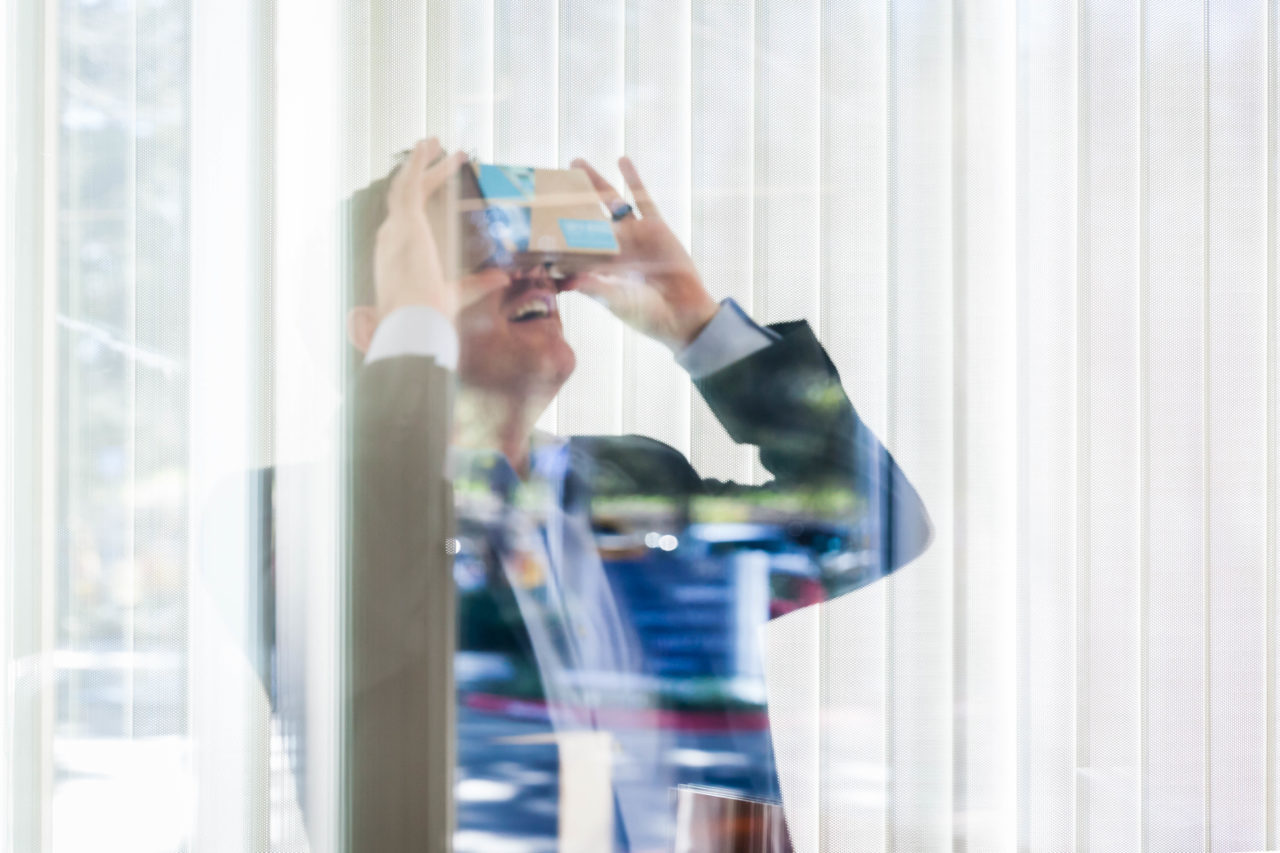Technologies are constantly changing in the world of architecture and one of the most exciting in recent years is the adoption of virtual reality (VR) into the design process. VR not only aids designers in proofing out the various aspects of their design but also allows clients to better understand the space before it’s even begun construction. The inclusion of this technology into practice has shifted how many architecture firms are operating and pushing everyone to a higher standard of deliverables.
Virtual Reality and Architecture
With the ability to transport viewers into a virtual space, it’s no wonder that architecture firms were keen to utilize the technology in their practice. A few reasons that virtual reality is so useful in architectural applications are:
- VR makes it much easier to empathize with people of different sizes, ages, and abilities because it allows you to see through their eyes. For instance, VR makes it easy to experience an elementary school as seen from the height of a younger student. With traditional illustrations or animations, you wouldn’t have an intuitive reaction to scale the way you do with VR.
- VR gives the client an immediate understanding of a place. Most people can’t easily understand proportions from looking at floor plans, so being able to “walk around” the building while it’s still being designed is helpful.
- Different rendering engines allow for one to experience different lighting schemes, materials, and how the two interact.
Overall, the virtual reality experience is much richer than simply looking at plans, and it creates a better understanding for all parties involved, It also allows for more empathy and understanding than what would have typically been conveyed via renderings or animations.
Importance Within the Industry
Virtual reality innately lends itself to industries such as architecture, where you’re immersing someone in a space that surrounds them completely. This is in contrast to augmented reality (AR), where you are looking at an object in an already existing space. AR is currently more helpful in product design, visualizing furniture in a space, or even applied to gaming applications.
Designing in VR is an exciting prospect, as it can help architects to quickly identify problems, avoiding revisions further on in the process. There is also the ability to insert components from other consultant’s work, such as HVAC systems, structure, or lighting. By seeing how all these pieces fit together early on, architects are able to coordinate more easily.
 HMC’s VR Applications in the Design Process
HMC’s VR Applications in the Design Process
Virtual reality is a fascinating way to break down the linear process of design. It allows anyone, regardless of their architectural skill level, to experience a project. While this is certainly helpful for clients, it also means that project teams can experience design like their users will. By identifying potential problems in a virtual space, architects can address them well before construction, saving time and money for everyone involved.
We’ve found virtual reality to be especially useful in school design, as these are large, expensive projects that need to be functional for decades in the future. There are often many stakeholders in the project, and with no single decision-maker, it’s important that architects use all the tools available to make sure that this wide variety of people involved can understand and contribute their thoughts.
Virtual reality is an excellent tool for displaying finishes, lighting options, samples, and renderings in a way that is more kinetic and interactive. It also has helped us make great strides towards more accessible and inclusive spaces. When designing for occupants who may be taller, shorter, or differently-abled, we’re able to envision a space from their perspective. That way, any design disconnects that we might not have originally noticed are that much more apparent.
For HMC, virtual reality can greatly shape a project’s success. In fact, many of our projects incorporate VR at some stage of the design process. For example, the Kaiser Permanente Beaverton project relied on virtual reality to give both the design teams and the client a greater sense of the space and how it would be used.
Jefferson High School also made use of VR throughout the design process. We scheduled VR sessions with the client so we could work more interactively. On occasion, different stakeholders would get involved in the collaboration, use VR to observe the design considerations, and offer suggestions for areas of improvement. We were then able to take that feedback to our teams and use it more effectively thereafter.
On top of all of these applications, virtual reality has had a substantial impact on our internal workflow as well. In some ways, that’s where the value proposition is greatest. Since any architectural project requires countless moving parts and independent teams working towards a common goal, virtual reality allows us to quickly align our team members and collaborate on design ideas. It also gives our teams a chance to experience that instinctual reaction to how a space is being presented, something that’s invaluable in this line of work.
 HMC, Virtual Reality, and Architecture
HMC, Virtual Reality, and Architecture
HMC Architects has always been a very forward-looking organization. We specialize in the early adoption of new technology to help streamline our process – both internally and externally. There are so many applications for virtual reality tech, many of which we are actively working to uncover. Since it’s a newer medium, there’s no de facto “industry standard” so we’re positioning ourselves at the cutting edge of this technology to truly pioneer how VR can impact architecture as a whole.
Virtual reality is an exciting tool within the architectural world, and we’re just scratching the surface of possibilities with the technology. Whether it be for conveying information to clients, coordinating the various components of a consultant’s work, or simply the architect getting a better understanding of the big picture, VR enhances the profession as a whole.
At HMC Architects, we understand the importance of using the latest technologies to better our designs, as well as help our clients to better understand the process. To learn more about virtual reality and how it helps to convey information in architecture, contact HMC Architects today. For specific questions about these programs or your project, email Creative Director Chris Grant directly. They will be happy to chat with you.



